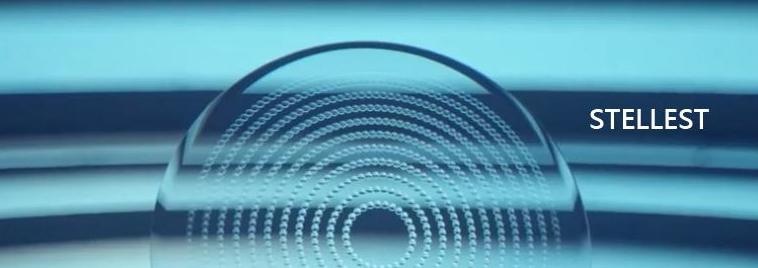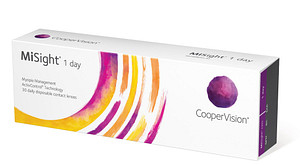Myopia Management
Myopia prevalence in children in the UK has doubled in 50 years. There is a pressing need to slow its progression.

What is myopia?
Myopia, (known as short sightedness) is when the eye is too long or too powerful. This results in light coming into the eye falling in front of the retina rather than directly on it, causing blurring of objects in the distance. As a child grows, their eye grows too, and children typically become more short sighted. The key years of development are generally between the ages of 6 to 17 with the fastest changes occurring in younger years before stabilising in early adulthood. Therefore, if a younger child develops myopia they are much more likely to have a higher final prescription. Prescriptions over -6DS are considered high myopia.
The prevalence of myopia is increasing more quickly than ever before. The incidence of myopia in UK children has more than doubled in the past few decades and it is estimated that 50% of the world’s population may be myopic by 2050.
Reducing the development of myopia
Why do people develop myopia?
Research suggests that a person’s genetics, lifestyle and their day-to-day environment all play a part. People who spend more time doing tasks at a close distance such as working on computers and reading, and those who spend less time outdoors are more likely to develop myopia. The chances of developing myopia are 3x higher when one parent is myopic and 7x higher when both parents are myopic.
Why are higher levels of myopia a problem?
A higher prescription is not only an inconvenience, causing poorer vision without glasses or contact lenses, but myopia and especially higher prescriptions (over -6DS) are linked to an increased risk of developing eye diseases such as glaucoma, retinal detachment, macular degeneration and cataract in later life. Slowing down the progression of myopia will significantly reduce the chance of developing high myopia and greatly reduce the risk of visual impairment in later life.
Myopia Management
What is myopia management?
Myopia management is the practice of trying to slow down myopia progression. It is unlikely to halt progression completely, however the aim is that your child will grow up with a lower prescription than if left untreated, reducing their future risk of developing serious eye disease later in life.
At Faith Donaldson Optometrists we offer two different programs for Myopia Management. We are accredited fitters of both the MiSight 1 day Contact Lenses and the Essilor Stellest spectacle lenses, both of which have been clinically proven to reduce myopia progression in children.

Essilor Stellest Spectacle Lenses
The Essilor Stellest spectacle lenses use award winning H.A.L.T. (Highly Aspheric Lenslet Target) technology, which has been proven to reduce elongation of the eye and myopia progression by an average of 67%. Developed by Essilor R&D teams, these lenses allow sharp far vision through a central vision zone surrounded by a constellation of aspheric lenslets spread on 11 rings which ingeniously to achieve consistent myopia slowdown without compromising vision and comfort. Our patients tell us how much they love wearing them!
These lenses are impact resistant, thin and light and have a reflection free surface with UV protection – ideal for a child’s active lifestyle. They are a safe, effective, and non-invasive way to manage myopia progression.
With a complimentary replacement if they become scratched within 2 years and a guarantee of complimentary new lenses if your child’s prescription changes by -0.50 within the year these are a popular choice with our young students.
If you have any further questions about Stellest H.A.L.T. Spectacle Lenses please feel free to contact us.
MiSight 1 day Contact Lenses
Evidence shows that specialist contact lenses can help to reduce myopia progression. We offer MiSight Contact lenses, which are the first Daily Disposable Contact Lenses designed specifically to slow down the progression of myopia in children.
The lenses are soft, comfortable and easy to use as they are disposed of at the end of the day. This means the child is able to look after their lenses with minimal risk of infection. They are suitable to be worn all day and are ideal for playing outdoors, sports and school. In a 3 year study of MiSight 1 day lenses in children aged 8-15 years, 90% of children said they preferred them to wearing glasses, 90% of children could insert and remove the lenses on their own and 100% of parents said their children were happy with the experience of wearing them.
MiSight lenses bend light traveling into the eyes at different angles, resulting in light landing on the peripheral retina in a way that doesn’t encourage lengthening of the eyeball, allowing the child to see clearly whilst slowing down eyeball growth. Studies showed a reduction in myopia progression of 59% over a 3 year period.
If you have any further questions about MiSight 1 day contact lenses or are interested in trialling these lenses please contact us.

Taking care of eyesight.
Our Top Tips:

We think this is a handy Rule to remember our top tips: 30 : 30 : OUT
1. Take breaks every 30 minutes from long intensive screen time or near-work.
2. Take note of ergonomics, such as proper lighting, posture, keeping the recommended working distance (hold tasks no closer than 30cm from your eyes) are very important to keep your eyes healthy while doing the near- work.
3. Spend more time outdoors, at least 30 minutes every day.
Don’t forget to Get regular eye check-ups to ensure that myopia or other vision problems are detected and treated early, reducing the worsening of vision, myopia progression and potential complications of high myopia.
Book your appointment at Faith Donaldson Optometrists today
Book your appointment at Faith Donaldson Optometrists today

Faith Donaldson Optometrists have a well-earned reputation for quality eyewear and clinical excellence
CONTACT
028 4176 9393
info@faithdonaldson.com
23 Greencastle Street, Kilkeel, Co Down, BT34 4BH
OPENING TIMES
Mon - Fri: 9am - 5pm
Wednesday: 9am - 8pm
Saturday: 9am - 1pm